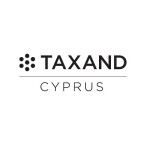Excessive debt financing has always been on the eye of tax authorities in order to protect their tax base. This is because multinational enterprises (MNEs) have the option to finance their activities with debt or equity each being subject to different tax treatment, and as a result, from a tax perspective, debt financing is considered more advantageous as opposed to equity.
Nevertheless, countries have introduced certain anti-avoidance provisions in order to disallow excessive interest deductions being claimed and therefore making MNEs pay their ‘fair of share of tax’. In doing so, a country may adopt any of the three commonly seen approaches:
Transfer pricing rules (i.e. whether the volume of debt financing is considered to be arm’s-length);
Earning stripping rules (i.e. interest deductibility is limited to 30% of EBITDA); and
Safe-haven approaches (i.e. thin capitalisation rules).
All of the approaches above are considered specific anti-avoidance rules (SAARs), and for completeness purposes, countries may also introduce in their domestic legislation general anti-avoidance rules (GAAR) to protect their tax base from certain abusive cases of excessive debt financing.
Protective measures on disallowing interest on excessive debt
To begin with, countries introduce transfer pricing rules where interest expenses would be allowed as deductions up to the arm’s-length amount – that is, the arm’s-length amount of the debt that an independent party (e.g. a bank) – will be willing to lend and further the arm's-length interest rate that is willing to provide.
Similar issues may also arise if, for example, a subsidiary borrows from an independent party with guarantees provided by a related company (a case in point is Chevron, the Australian case). In this context, the OECD eventually published specific guidance on financial transactions, namely the Transfer Pricing Guidance on Financial Transactions: Inclusive Framework on BEPS Actions 4, 8-10 on February 11 2020 (FT Report).
Notably, paragraph 10.9 of the FT Report states that “this guidance is not intended to prevent countries from implementing approaches to address the balance of debt and equity funding of an entity and interest deductibility under domestic legislation” and as a result, other approaches such as earning stripping rules and thin capitalisation rules may be applicable as well.
Second, earning stripping rules were implemented by both the OECD via BEPS Action 4 and the EU via the ATAD Article 4 adopting the German approach, which limits the deductibility of interest to 30% of EBITDA. Notably, certain exceptions apply such as not disallowing for interest deductions up to €3 million (de minimis exception) and an option to apply the 30% EBITDA at group level. In 2018, the US introduced this approach as well.
Third, countries introduce thin capitalisation rules by using as safe harbour a debt-to-equity ratio. Accordingly, a debt-to-equity ratio, such as 1.5:1, is used to compare the debt financing obtained by a company from a related party. The interest expense on the excess debt financing over the safe harbour ratio is then disallowed for tax purposes. This approach does not focus on the amount of interest expenses accruing on debt claims per se but rather on the volume of debt as compared with equity.
For example, assume that company A resident in Country A borrowed €10 million at 5% from its parent company B resident in Country B. Assume further that the safe heaven rule of Country A is a debt-to-equity ratio of 1.5:1 and the debt-to-equity ratio of company A is 2:1. Thus, for tax purposes, interest amounting to €125,000 (2,500,000 at 5%) will not be deducted.
Practical application and planning points
The abundance of the SAARs noted above raises the question of how each MNE may minimise its tax exposure (i.e. minimise its tax risks). The OECD with the release of the FT Report has provided clarity and therefore, to one extend, greater degree of ‘certainty’ in relation to transfer pricing rules. Likewise, certainty is also provided with both earning stripping rules and thin capitalisation rules as MNEs need to comply with a predetermined ratio.
However, as all three approaches noted above may be applicable at the same time, interest expense may be disallowed, for example, under the transfer pricing method rules and not under the earnings stripping rules. Put differently, the mere fact that a taxpayer may meet the predetermined ratio of either the earning stripping rules or thin capitalisation rules this does not necessarily mean that it will also comply with the transfer pricing rules as provided in the FT Report (or more generally with the OECD Guidelines).
Yet, complying with the transfer pricing approach might provide better results. For example, assume that a taxpayer resident in Country A, with respect for its intra-group loans, prepared a transfer pricing study in line with the FT Report. As a result, the taxpayer applied both the arm’s-length interest rate and capital structure of such transfer pricing report. Such arm’s-length capital structure would normally or expected to be in line with the Country A thin capitalisation rules.
Similarly, the arm’s-length interest rate would typically be expected to be in line with the 30% of EBITDA rule. From a tax treaty perspective, excessive debt financing is considered under Article 9(1) and Article 11(6). Article 9(1)[1] adopts the arm’s-length principle and therefore favours the transfer pricing approach rather than the other methods. Article 11(6) is triggered when the interest rate is considered excessive.
Notably, Article 11(6) does not generally apply to an excessive amount of debt due to the following wording “having regard to the debt claim for which it is paid”. As a result, an arm’s-length interest rate calculated with the transfer pricing approach – and not according to a predetermined ratio as used by the other two methods – would normally not be considered excessive.
Consequently, MNEs that are bulletproof from a transfer pricing perspective (i.e. follow the guidance of the FT Report) seem to minimise the risk of interest expense being disallowed by tax authorities in any of the three approaches.
---
[1] That deals with adjustments to profits that may be made for tax purposes where transactions have been entered into between associated enterprises, and adopts the Transfer Pricing Guidelines for Multinational Enterprises and Tax Administrations, which is periodically updated.
Costas Savva
T: +357 22 875 720
Demis Ioannou
T: +357 22 875 720













